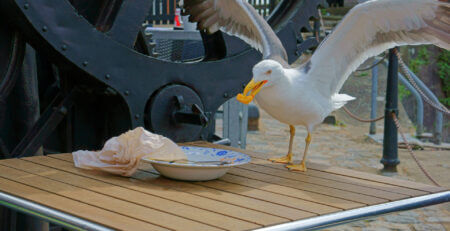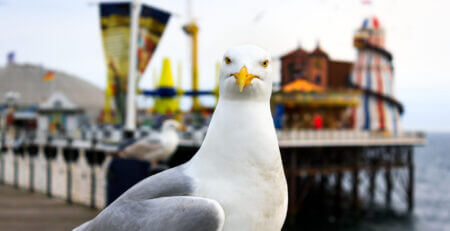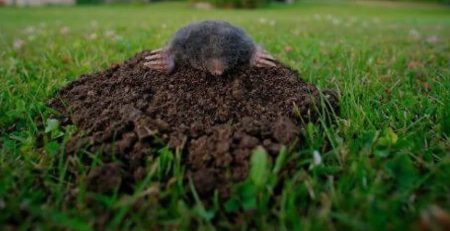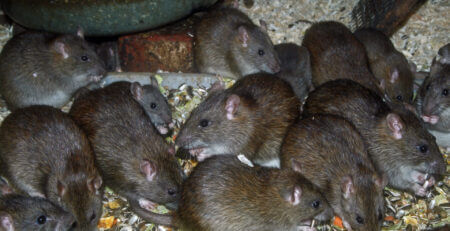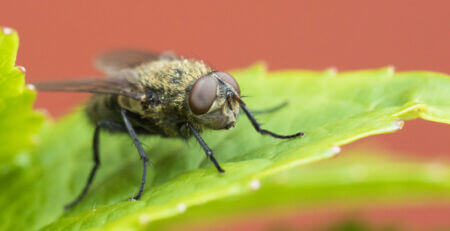A Guide to Physical Bird Deterrents: Netting, Spikes, and Wire Systems
Physical bird deterrents play a crucial role in effective bird control, helping to prevent birds from accessing specific areas, roosting, or nesting. Among the various methods available, netting, spikes, and wire systems are popular choices due to their effectiveness and humane nature. In this article, Pest Control Direct will provide an extensive overview of these physical bird deterrents, highlighting their features, benefits, and considerations. Understanding the use of netting, spikes, and wire systems will assist individuals and businesses in implementing successful bird control strategies.
Bird Netting
Bird netting is a versatile and widely used physical deterrent that creates a barrier to exclude birds from specific areas. Here are the key features and benefits of bird netting:
- Material: Bird netting is typically made of durable and UV-stabilized polyethylene or similar materials. It is available in various mesh sizes to accommodate different bird species.
- Installation: The netting is installed to create a physical barrier, preventing birds from accessing rooftops, balconies, gardens, and other areas.
- Effectiveness: Bird netting is highly effective in excluding birds without causing harm. It allows light and air to pass through while providing a barrier against birds.
- Versatility: Bird netting can be customized to fit various structures and shapes. It is available in different colors to blend with the surroundings or be discreetly installed.
- Longevity: Properly installed and maintained bird netting can provide long-lasting protection, with a lifespan of several years.
Considerations:
- Professional Installation: While some homeowners may install bird netting themselves, professional installation is recommended for larger or more complex projects to ensure proper installation and maximize effectiveness.
- Aesthetics: Care should be taken to ensure that bird netting is installed in a way that does not compromise the aesthetics of the building or structure. Proper tensioning and discreet attachment points can help maintain a visually pleasing appearance.
Bird Spikes
Bird spikes are physical deterrents designed to prevent birds from perching or landing on ledges, signs, roofs, and other flat surfaces. Here are the key features and benefits of bird spikes:
- Design: Bird spikes consist of narrow, pointed rods made of stainless steel or durable plastic, spaced closely together along a base strip.
- Installation: Bird spikes are typically attached to surfaces using adhesive, screws, or tie-wraps. They create an uneven landing surface, making it uncomfortable and impractical for birds to perch.
- Effectiveness: Bird spikes effectively deter birds from landing or roosting without causing harm. They are suitable for a wide range of bird species and are particularly effective against pigeons and seagulls.
- Durability: High-quality bird spikes are designed to withstand different weather conditions, including UV exposure and corrosion, ensuring long-term effectiveness.
Considerations:
- Surface Compatibility: Bird spikes are suitable for flat surfaces. Care should be taken to ensure compatibility with the surface material and consider alternative deterrents for uneven or irregular surfaces.
- Maintenance: Regular inspection and maintenance are necessary to remove debris, such as leaves or nesting materials, that can compromise the effectiveness of bird spikes.
- Visibility: Bird spikes are visible deterrents. Consider their visual impact on the building or structure, particularly in highly visible areas.
Wire Systems
Wire systems create an unstable landing or roosting surface for birds, discouraging them from perching or nesting. Here are the key features and benefits of wire systems:
- Design: Wire systems consist of tensioned wires or coils mounted on posts or brackets. They create an irregular surface that birds find difficult to land or balance on.
- Installations: Wire systems can be installed horizontally or diagonally, depending on the target area and the bird species to be deterred. They can be tensioned between posts, brackets, or other structures.
- Effectiveness: Wire systems effectively deter birds from landing or roosting without causing harm. They are particularly effective against large birds such as pigeons, seagulls, and crows.
- Durability: High-quality wire systems are designed to withstand different weather conditions, providing long-term bird control.
Considerations:
- Proper Installation: Proper tensioning and spacing of wires are crucial for maximizing the effectiveness of wire systems. Professional installation may be necessary for large or complex projects.
- Visibility: Wire systems are visible deterrents. Consider their visual impact on the building or structure, particularly in highly visible areas.
- Maintenance: Regular inspection and maintenance are necessary to ensure that wires remain taut and free from debris.
Conclusion
Physical bird deterrents such as netting, spikes, and visual deterrents offer effective and humane solutions for bird control. Bird netting provides a versatile barrier to exclude birds, while bird spikes and wire systems create an unstable landing or roosting surface. When used correctly and in combination with other bird control strategies, these physical deterrents help prevent property damage, health risks, and other issues associated with bird infestations. Consulting with pest control professionals can ensure the proper installation and optimal effectiveness of these physical bird deterrents, leading to successful bird control outcomes and a harmonious coexistence between humans and birds.




